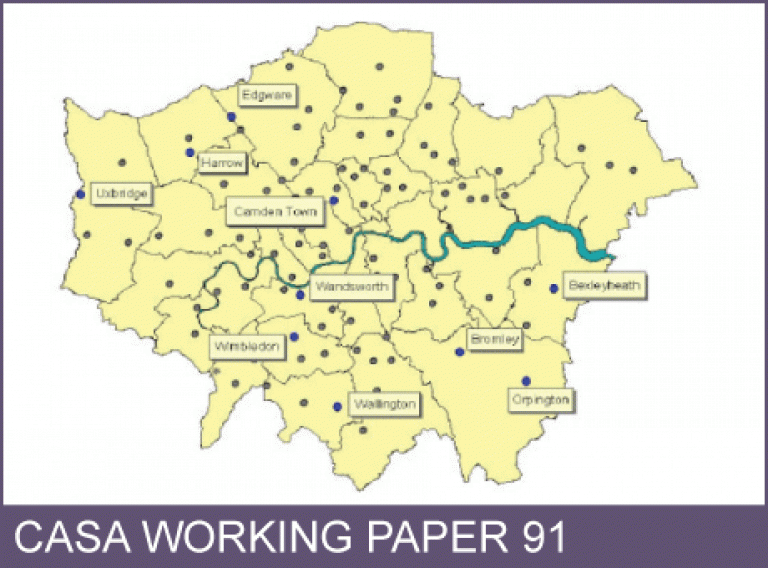CASA Working Paper 91

1 February 2005
Tracking retail trends in London -- Linking the 1971 Census of Distribution to ODPM's new town centre statistical series --A revised report
Retailing is highly significant to London's employment, economy, tourism and inward investment. The London Retail Sales Monitor, published by London Retail Consortium with KPMG, estimated that more than 356,000 people were employed in retail in the capital in September 2003. This represented around 9% of the total workforce.
It goes on to estimate that there are more than 30,000 shops in London, 3,000 of them in central London, and that retailing provides 3% of the city's GDP.
The problem has been that no-one could assess the accuracy of these estimates until this year. In May 2004, ODPM published a range of retail statistics, dated to 2000, offering a reliable picture of the performance of the retail economy.
Prior to this, the last systematic collection of data about retail activity in London or the UK as a whole was in 1971. The development of the sector since this time has occurred in a vacuum of official information.
The 1971 figures are the result of the last in a series of Censuses of Distribution and Other Services, taken in 1950, 1957, 1961, 1966 and 1971, which drew a comprehensive picture of retailing in Britain over this period.
The last full census in 1971 provided volumes of data on shopping areas in towns of more than 50,000 across the country, and for the capital it covered each London Borough, the City, and the other towns in the region having a population of 20,000 or more.
Rather than undertake such a census again to address the lack of accurate retail data, the Office for the Deputy Prime Minister (ODPM) saw the opportunity to use its range of statistics for major town centres in England and Wales.
UCL's Centre for Advanced Spatial Analysis undertook the task of comparing the 1971 Census of Distribution with the recently released ODPM town centres data.
The purpose of this project, carried out during 2004 for GLA Economics, was to provide a means of measuring the changes which have affected Greater London's retail economy during the last 30 years, since the last systematic survey of retailing in the capital was undertaken.
A number of significant issues had to be overcome in attempting this comparison, the greatest of which being that the 1971 data was held only in hard copy format. Geographical changes to London's town centres and the definitions applied in the two datasets also presented challenges. This report details the methods used to address these difficulties, and sets out the results of some initial analysis.
In the first section, we outline the processes employed in transferring the hard copy Census of Distribution into digital form. The second section offers some analysis of the changes that have occurred in London's retail economy between 1971 and 2000.
We also provide two Annexes which include more detailed information on the names of town centres in 1971 and 2000, and the classification of convenience and comparison retailing in 2000.
This working paper is available as a PDF. The file size is 1MB.
Authors: Mark Thurstain-Goodwin, Yi Gong
Publication Date: 1/2/2005
 Close
Close

